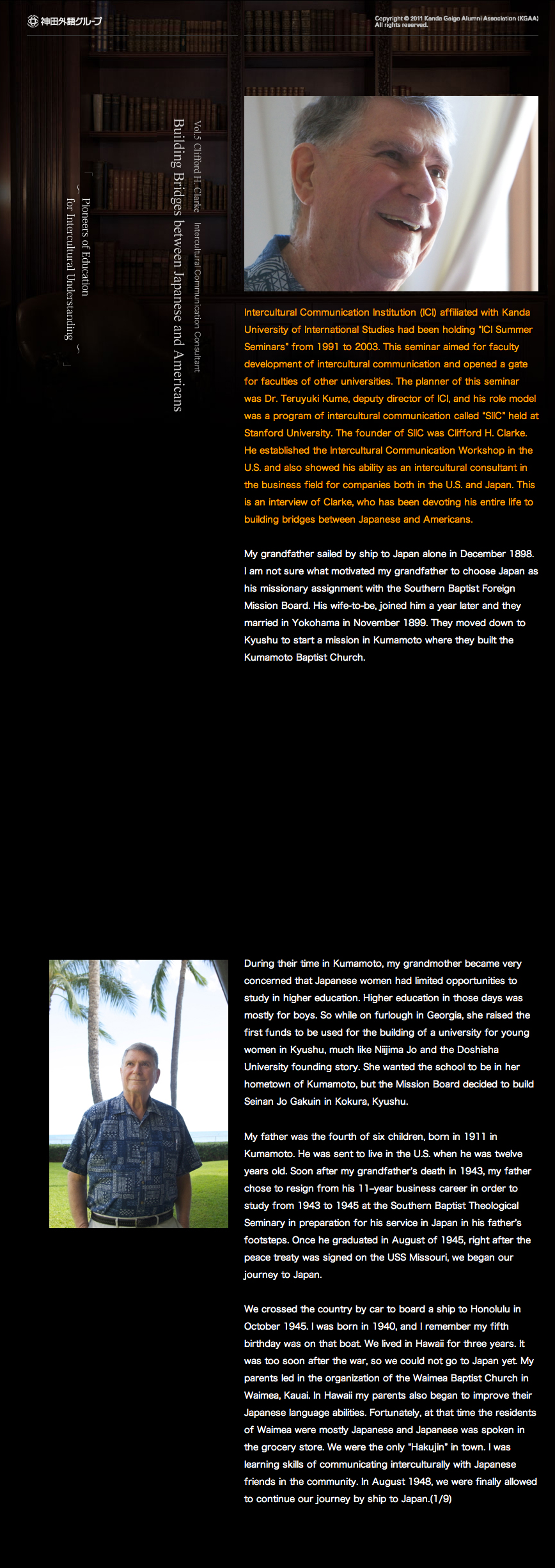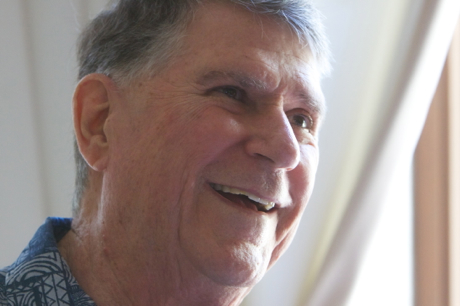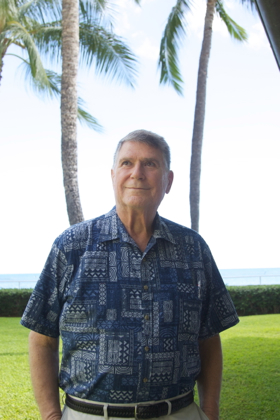

Copyright © 2011 Kanda Gaigo Alumni Association(KGAA). All rights reserved.

Intercultural Communication Institution (ICI) affiliated with Kanda University of International Studies had been holding “ICI Summer Seminars” from 1991 to 2003. This seminar aimed for faculty development of intercultural communication and opened a gate for faculties of other universities. The planner of this seminar was Dr. Teruyuki Kume, deputy director of ICI, and his role model was a program of intercultural communication called “SIIC” held at Stanford University. The founder of SIIC was Clifford H. Clarke. He established the Intercultural Communication Workshop in the U.S. and also showed his ability as an intercultural consultant in the business field for companies both in the U.S. and Japan. This is an interview of Clarke, who has been devoting his entire life to building bridges between Japanese and Americans.

My grandfather sailed by ship to Japan alone in December 1898. I am not sure what motivated my grandfather to choose Japan as his missionary assignment with the Southern Baptist Foreign Mission Board. His wife-to-be, joined him a year later and they married in Yokohama in November 1899. They moved down to Kyushu to start a mission in Kumamoto where they built the Kumamoto Baptist Church.
During their time in Kumamoto, my grandmother became very concerned that Japanese women had limited opportunities to study in higher education. Higher education in those days was mostly for boys. So while on furlough in Georgia, she raised the first funds to be used for the building of a university for young women in Kyushu, much like Niijima Jo and the Doshisha University founding story. She wanted the school to be in her hometown of Kumamoto, but the Mission Board decided to build Seinan Jo Gakuin in Kokura, Kyushu.
My father was the fourth of six children, born in 1911 in Kumamoto. He was sent to live in the U.S. when he was twelve years old. Soon after my grandfather’s death in 1943, my father chose to resign from his 11–year business career in order to study from 1943 to 1945 at the Southern Baptist Theological Seminary in preparation for his service in Japan in his father’s footsteps. Once he graduated in August of 1945, right after the peace treaty was signed on the USS Missouri, we began our journey to Japan.
We crossed the country by car to board a ship to Honolulu in October 1945. I was born in 1940, and I remember my fifth birthday was on that boat. We lived in Hawaii for three years. It was too soon after the war, so we could not go to Japan yet. My parents led in the organization of the Waimea Baptist Church in Waimea, Kauai. In Hawaii my parents also began to improve their Japanese language abilities. Fortunately, at that time the residents of Waimea were mostly Japanese and Japanese was spoken in the grocery store. We were the only “Hakujin” in town. I was learning skills of communicating interculturally with Japanese friends in the community. In August 1948, we were finally allowed to continue our journey by ship to Japan.(1/9)